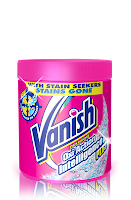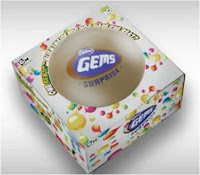
Sunday, June 13, 2010
Brand Update : Sugar Free Natura - Expanding Brand Usage

Tuesday, June 08, 2010
Brand Update : Vanish Gets a Brand Ambassador

Sunday, June 06, 2010
Marketing Strategy : Four Pillars Of Customer Focus
The Four Pillars of Customer Focus
Originally Published Here at Adclubbombay.com
Customer focus is one of the most used jargons in the marketing lexicon. Despite being accepted as an important strategy, many firms have not yet been capable of delivering exceptional customer service and focus in their operations.
Customer focus is a choice and the choice has to be made at the highest management level. Being customer focused is an expensive proposition. It is resource intensive and needs hands-on management from senior leadership of the company. More than money, customer focused strategy depend on human resource. The investment needed for maintaining customer focus is the time and dedication of all management levels towards the goal of service excellence. Most of the firms which aspire to be customer focused fail because of the lack of involvement of top management in customer-related activities.
Most companies invest their resources in creating processes and automating customer touch points. After this investment, the management leaves the customer management to these insensitive machines and algorithms. The entire process will be a waste unless there is a human element in it.
For any organisation who aspire to be customer-centric should start by building a strong foundation .Without a strong foundation, customer centric activities will lack in their effectiveness.
Customer knowledge, Culture, Human Resources and Conflict resolution are the four pillars of a customer focused organisational strategy.
Customer Knowledge
Customer profiling is the first step towards building customer focus. This is one of the most difficult phases in the quest towards customer focus. The depth of customer focus in a company is directly proportional to the depth of the customer information collected. The effectiveness of all customer-related promotions will depend on the extent to which the collected information is being used at the customer touch points.
For example in a business to business environment, firms are sitting on a huge pile of customer information. The information from the past interactions with the customer, the information from the past sales data are all available with the company. How well this information is available to the sales force will determine the effectiveness of any customer related campaign run by the company. While most firms collect customer information, this information are seldom updated or distributed to the concerned personnel.
Another important task for the managers is to identify the customer group that the organisation should focus on. It is near impossible for organisations to satisfy every customer. Some customers may be unprofitable for the company to serve. The management should be able to take informed decision on the customer groups which it will have to focus on. Once these groups are identified, firms must orient its organisation to deliver exceptional service to these customers.
Customer-Centric Organisational Culture
The second most important pillar of customer focused organisational strategy is the culture. Customer-centric organisational culture is where the entire organization is tuned to deliver exceptional service to the customer. Customers become the centre around which the organization is built.
The Chief Executive becomes the Chief Customer Officer. Every process and actions of the firm is prepared with customer in mind. Although this proposition may sound theoretical, companies like Marriott, P&G and FedEx have built their business around a customer focused strategy.
Human Resource
People form the third pillar of a customer focused organisation. The employees are the vital interface between the customer and the company. Customer focused organisations invest huge resources in developing a team of highly trained customer- care executives.
It is critical for organisation to understand the importance of front-line employees who deal directly with the customers. These employees represent the face of the organisation. There has to be clear role clarity for employees who interact with the customers. Customers always prefer a single contact point with the selling organisations. Customer focused organisations thrive because their entire organisation is created to optimize customer touch points. The customer –care executives are given enough authority and responsibilities to deal with customer requirements. Cases which are beyond their authority are escalated to higher levels.
Conflict Resolution.
Handling customer conflicts is the litmus test of the effectiveness of any customer-centric organisation. When there are no conflicts or complaints, customer management is not a daunting task.
The real depth of customer focus is revealed when there is a complaint or a conflict. As customers, we all have faced situations where our complaints go unresolved. A recent survey conducted on mobile phone users revealed that unresolved complaint was one of the major reasons for customer churning in Post-paid customer segment.
Customer focused organisations have a robust complaint handling mechanism backed by strong process and also sufficient budgets. These organisations have a system where complaints or conflicts are addressed within a stipulated time frame. The unresolved complaints are escalated to higher levels of management and necessary actions are taken at each levels of management for proper remedial actions.
Thursday, June 03, 2010
Titan Zoop : Be Cool

In 1998-99, Titan tried to tap the market with a brand Dash. But the brand failed to catch the fancy of the market at that point of time. Analysts says that Dash was too early for the Indian consumers. During that time, parents were not that interested in spending on kid's accessories like Watches.
Watch the ad here : Zoop
Zoop faces competition from the host of unorganized players in the market along with cheap Chinese imports. For Zoop, budget competition will also be something to be concerned about. Budget competition is the competition for the money . Budget competition for Zoop will be those kid's products across various categories that falls in the price band of Rs 350- Rs 1000. That include toys, clothes, video games, etc. If you look at the launch campaign of Zoop , the brand subtly addresses that competition by pointing at the ' need ' for a watch.
Zoop has rightly positioned itself on the style factor and I am sure many young customers will fall for it.
Monday, May 31, 2010
Marketing Strategy : How to Engage Customers to Create Brand Equity
Engage Customers to Create Brand Equity
Originally Published here at adclubbombay.com
Engagement means creating involvement. Customer engagement means the effort taken by the brand to develop an involvement between customers and the brand beyond regular purchase and use.
Traditional marketing practices seldom encourage active involvement of customers. The marketers often are satisfied with the regular purchase of the product by the customers and the level of engagement with the customers is limited to handling queries, handling complaints and loyalty programs.
The new economy has necessitated marketers to think beyond the typical purchase/sales orientation to a more pro-active customer engagement orientation. The web 2.0 and the rising popularity of social media have created a new cost effective platform for marketers to build and maintain customer engagement programs.
Take the example of ZooZoo- the characters created by Vodafone to promote its Value Added Services. With in a short span of time, ZooZoo was all over the social media and the Facebook fan count reached 2, 75000 at the time this article is being written. Using ZooZoo, Vodafone has created a new way of connecting and engaging with the target audience.
Create a culture of engagement.
It is not easy to create effective customer engagement. The first and foremost requirement for effective customer engagement is to orient the company culture towards a customer orientation. Customers can be demanding and more so when the company takes an initiative to reach out. Hence marketers should venture into creating active engagement only after the entire firm develops an orientation towards customers.
Make it easier for customers to connect.
An important requisite for active customer engagement is to make the process easier for consumers to reach the company. Active consumer engagement cannot work effectively in an outsourced environment. Hence the marketing department should be able to create and sustain a robust mechanism to respond to the consumers.
The web has made it easier for marketers to keep tab on consumers’ demands. But in a country like India, one should account for millions of consumers who cannot access such a channel. While creating such engagement channels, the brand has to create a robust process to ensure that it responds to the consumer immediately. An unanswered query or a complaint can create negativity and can be detrimental to the brand’s equity.
Have a vision
Brand managers should have a clear vision about the outcome and purpose of customer engagement. The critical question is “what is the expected outcome of this engagement?”
The outcomes of a customer engagement program need not be based on purchase or sales. There can be qualitative objectives also for such an engagement. How ever brands will reap the benefits of loyalty and repeat purchases from the consumers who are actively engaged with it.
When the consumers are actively engaged with the brand, one need not search too far for new product ideas. Highly involved consumers will be a vital information source for obtaining feedback and product improvement ideas.
Move to a higher ladder.
Once the platform is identified and target audience chosen, the brand should have something to say to the consumer. The brand can engage the customer in many ways. Typically during engagement, brands will assume the role of an expert offering advice to consumers on problems. The task for the marketer is to find the areas in which the brand should engage with its consumers. For example, through Gang of Girls website, Sunsilk is providing tips and advice on hair care which is the subject where the brand is an expert. The advantage of such an engagement is that the brand has more control over the conversation.
While identifying the area of engagement, the brand should be able to ladder up to a more abstract need rather than restricting itself into a category need. This will appeal to a larger audience and thus take the brand’s reach farther. Tata Tea created a highly successful engagement based on the theme “ Jagore “ inspiring many youths to register themselves as voters in the recent general elections. But the challenge for the brand is to take this engagement further since the elections are over.
Another way of engagement is where the brand provides a platform through which the consumers engage with each other. The brand acts as a facilitator rather than the expert. Consumer driven brand communities are the results of such an engagement. These engagements are more powerful than the brand driven engagements because the underlying cause for such engagements arises out of passion rather than profit.
It is all about action
Successful engagement arises out of action. Brands venturing into creating customer engagement must devise ways to create and maintain a higher energy level among the consumers. The engagement plan should have activities, contests, debates, meet ups, webinars, sharing, exchanges, tweets etc to keep up the energy level. This means that there is going to be a substantial investment on the part of the brand to keep the momentum going. The investment is more on the human side rather than monetary investment. Technology has enabled companies to keep these engagement costs minimal. But there has to be a dedicated team who will keep the activity levels high so that there is never a dull moment.
Saturday, May 29, 2010
Brand Update : Gems Does a Kinder Joy

Gems Surprise is inspired ( copy ?) by the Kinder Surprise . Kinder Surprise has met with success in the Indian market. I do not have the figures but as a consumer, I have been a regular buyer of this product so are my friends.
The consumer acceptance of the Kinder Joy may have been the reason for the launch of Gems Surprise.
Kinder Surprise was never a competition for Gems. Kinder Surprise has created different niche where Cadbury does not have a presence. Cadbury does not want any product to rule any part of the chocolate market that easily. Through Gems Surprise, Cadbury is addressing the industry competition.
There is no product in Cadbury's brand portfolio that is similar to Kinder Surprise. Gems was chosen because it is a unique brand with lot of equity among the consumers. The form factor of Gems also made the brand worthy of being a competitor for Kinder Surprise.
Gems Surprise is going to create holes in the Parent's pockets. Gems was always affordable and right product to buy for the Kids. Gems Surprise priced at Rs 30 is an upward stretch for the brand.
The question is whether the consumer will buy Gems for Rs 30 because there is a gift free with it ? For all those customers who has been buying SKUs of Gems for Rs 5 and Rs 10 may find it difficult to justify the purchase of Gem's Surprise at Rs 30.
What I understand is that the product ( chocolate ) will be the same in Gems Surprise. What you pay more is for the toy.In the case of Kinder Surprise, consumers did not have a benchmark about the price so Rs 30 for Kinder Joy was accepted by the consumer.
Gems will definitely get lot of consumer trials and purchases .Whether the purchases will be sustainable will depend a lot on the variety of the gifts that is inside the pack. Kinder Surprise is the master in this game. Will Gems beat the master will be a fun ( expensive though) to watch.
Related Brand
Kinder Surprise